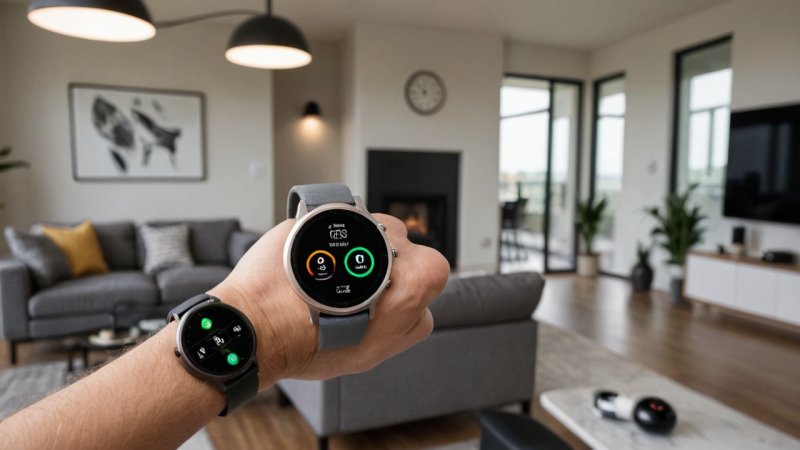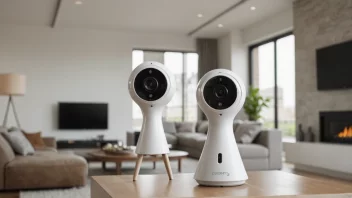As technology continues to advance, the intersection between wearables and home security is becoming increasingly significant. Wearable devices, from smartwatches to fitness trackers, have evolved to support a variety of functionalities beyond just health monitoring. One of the most promising areas is their potential to enhance home security systems, providing users with real-time data and alerts, as well as the ability to control their home security remotely. This article will delve into how wearables contribute to home security, the latest innovations in this field, and practical tips for integrating these technologies into your daily life.
Understanding Wearables in Home Security
Wearables encompass a wide range of devices that can be worn on the body, often equipped with sensors and connectivity features. These devices can track health metrics, monitor physical activity, and now, increasingly, interact with smart home systems. The integration of wearables into home security is a natural evolution as users seek seamless ways to enhance safety and streamline their daily routines.
The Role of Wearables in Home Security
Wearables can serve multiple roles in home security, including:
- Real-Time Notifications: Wearables can alert users to security breaches or unusual activity in real-time, allowing for immediate action.
- Remote Control: Many wearables allow users to control security systems, such as locking doors or activating alarms, directly from their wrists.
- Location Tracking: GPS-enabled wearables can track user locations, which can be useful in emergency situations or to ensure safety when away from home.
Latest Innovations in Wearable Security Technology
The integration of wearables and home security is continually evolving. Here are some of the latest innovations that are shaping this landscape:
Smartwatches with Security Features
Modern smartwatches, such as the Apple Watch and Samsung Galaxy Watch, come equipped with features that enhance home security. Users can receive alerts from their security systems directly on their watches, allowing for quick reactions. Additionally, some smartwatches can connect to security cameras, enabling users to view live feeds, take snapshots, or even communicate through two-way audio.
Fitness Trackers with Emergency Alerts
Fitness trackers, like Fitbit and Garmin, are now incorporating emergency alert features. In case of a fall or if the wearer feels unsafe, these devices can send an alert to pre-selected contacts or emergency services. This capability adds an extra layer of safety, especially for those who live alone or in isolated areas.
Wearable Cameras
Wearable cameras, such as the GoPro or specialized security cameras, can be used to capture footage of one's surroundings in real time. These devices can be linked to home security systems, providing an additional perspective on security events and allowing users to monitor their home while they are away.
Integrating Wearables into Your Home Security System
To effectively integrate wearables into your home security system, consider the following steps:
1. Choose Compatible Devices
Not all wearables are designed to work with every home security system. Research and select wearables that are compatible with your existing smart home devices. For example, if you have a smart doorbell, ensure your smartwatch can receive notifications from it.
2. Set Up Alerts and Notifications
Customize your wearable device to receive alerts from your home security system. This may involve connecting your security app to your smartwatch or fitness tracker, allowing you to receive notifications for motion detection, door openings, or alarm triggers.
3. Regularly Update Software
Keep both your wearable and home security systems updated to ensure optimal performance and security. Software updates often include new features and security patches that can enhance functionality.
4. Educate Family Members
If multiple family members will be using the wearable device, take the time to educate them on its features and how to respond to alerts. This ensures that everyone knows how to handle potential security issues effectively.
Practical Tips for Using Wearables in Home Security
Utilizing wearables for home security can be made even more effective with these practical tips:
1. Establish a Security Routine
Creating a routine can help you make the most of your wearable's capabilities. For instance, set a reminder to check your security notifications at specific times of the day or before leaving the house.
2. Utilize Geofencing Features
Many smart home security systems offer geofencing capabilities that can interact with wearables. For example, you can set your security system to arm itself automatically when your smartwatch detects that you have left a designated area.
3. Combine with Voice Assistants
Integrate your wearables with voice assistants like Amazon Alexa or Google Assistant. This allows you to control your security system hands-free, making it more convenient to check security status or make adjustments on the go.
Challenges and Considerations
While the benefits of integrating wearables with home security are significant, there are also challenges to consider:
1. Privacy Concerns
With the increased connectivity of wearables, privacy is a major concern. Ensure that your wearable device has robust security measures in place to protect your personal data.
2. Battery Life
Many wearables require regular charging. Consider the battery life of your device, especially if you rely on it for security alerts. Devices with longer battery life or those that can charge quickly are preferable.
3. Potential for Over-Reliance
While technology can enhance security, it’s important not to become overly reliant on it. Always have backup plans in place and maintain traditional security measures.
Conclusion
The future of home security is undoubtedly linked to wearable technology. As innovations continue to emerge, the combination of wearables and home security systems will provide users with enhanced safety, convenience, and peace of mind. By understanding the benefits, integrating wearables effectively, and remaining aware of potential challenges, you can leverage these technologies to create a secure living environment. As we move forward, staying informed about advancements in wearables will be essential for maximizing their potential in home security.






